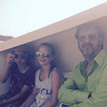An M7 newbie rambles (warning photos!)
-
Recently Browsing 0 members
- No registered users viewing this page.
-
Similar Content
-
- 4 replies
- 588 views
-
- 12 replies
- 555 views
-
- 2 replies
- 331 views
-
Leica X1 Photos 1 2 3 4 71
By davidhunternyc,
- 1,413 replies
- 219,467 views
-
- 4,004 replies
- 334,964 views
-




.thumb.jpg.cd7479a87ec34e368eb4dfcd6d1f25cb.jpg)

Recommended Posts
Join the conversation
You can post now and register later. If you have an account, sign in now to post with your account.
Note: Your post will require moderator approval before it will be visible.